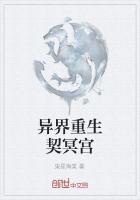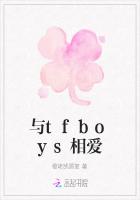Shaolin Kungfu originated from folk Kungfu of the Central Plains. According to archeological records, the Kungfu in the Central Plains developed at a certain level during the Eastern (206 BC–AD 25) and Western Han (25–220) Dynasties. The Qigong also accumulated rich experiences. The monks of the Shaolin Temple are mainly from the Central Plains, so some monks had already learned Kungfu before entering the temple, and they taught each other after entering the temple. The Shaolin Temple always held the tradition of widely absorbing the best Kungfu performances from the monasteries and continued to improve upon them.
At the end of the Sui Dynasty (581–618), 13 monks helped Li Shimin (599–649), emperor of the Tang Dynasty defeat Wang Shichong, popularizing Shaolin Kungfu. During the Five Dynasties Period (907–960), Shaolin Fuju invited 18 martial arts masters to help improve Shaolin martial arts. Fuju absorbed the best martial art techniques from others and compiled the Shaolin Quan. During the Jin and Yuan dynasties (1115–1234), Shaolin monk Jueyuan, Li Sou, a famous martial artist f ro m L a n z h o u a n d Bai Yufeng, a famous m a r t i a l a r t i s t f ro m Luoyang (entered the temple and took the name Qiu Yue Chan Shi) created more than 70 Shaolin martial techniques. Shaolin Kungfu gradually developed and matured from the Sui and Tang dynasties to the Jin and Yuan dynasties.
Shaolin kungfu was well known in the world during the Ming and Qing dynasties. During the Jiajing period of the Ming Dynasty (1522–1566), the Shaolin Temple sent more than 80 martial monks to fight with Japanese pirates and defeated the enemies. In the 40th year of the Jiajing reign (1561), Ming general Yu Dayou (1504–1580), who was reputed for his anti-Japanese military service, went to teach cudgel-fighting skills in the Shaolin Temple. After this, Shaolin monks switched from cudgel fighting to fist fighting, so fist fights could be promoted to match cudgel fights. At the end of the Ming Dynasty, Shaolin monk Hong Ji also learned outstanding spear-fighting skills from Liu Dechang.
During the late Ming and early Qing eras, Shaolin Kungfu absorbed the best features of many northern boxing schools, the cudgel fighting skills of Fujian Province and the spear-fighting skills of Sichuan province. The broad and extensive Shaolin boxing family was formed based on Shaolin Kungfu, and finally achieved a high position in Wushu circle. At the same time, because Shaolin Kungfu became more famous, many boxing schools in northern China also claimed themselves as part of the Shaolin boxing family. In this way, the Shaolin boxing family covered nearly all the Chinese martial schools of northern region. Shaolin Kungfu became the general term for Wushu in the northern region.
Many boxing generics currently prevalent in the north such as Meihua Quan (plum blossom fist), and Paoquan (cannon fist) all belong to the Shaolin boxing family. Every type of fist has its own independent fist forms and techniques. At present, the Shaolin Temple has 371 different forms, including 234 varying types of boxing forms and 137 ways to use of weapons. There is also another saying; Shaolin has 72 types of secret arts.
Shaolinquan is known for being powerful and strong. The men from the Central Plains are tall and strong, and simple and honest, so their fists open wide and close tightly with a strong force that reveals the advantages of having long arms and legs.
Shaolinquan is simple and modest: it is based on the practicality of fighting. Their style of fist fighting is described as “fighting along a single straight line.” According the method, when fighting counterparts, one should use to maximum strength to prevent his body from being attacked by his enemies. For Shaolinquan, it is required all strikes be executed within the space of a lying ox, which means the fighting distance between he and his enemies should only be a few steps apart.
The martial arts, for the most part, were shaped and cradled by the Shaolin Temple throughout history, just as Ch’an and Zen today are the result of Chinese influence. Shaolin Kungfu is therefore the “granddaddy” of all Asian martial arts. The keystone of Shaolin Kungfu is the integration of fist fighting and Buddhism. The original aim of practicing boxing by the Shaolin monks was to protect the temple and Buddhism. Shaolin monks were required to practice meditation, which is an integral part of Buddhist practice. Dhyanna was an Indian form of Buddhist meditation, which stressed meditation by sitting and other forms of meditation to help bring about enlightenment in its practitioners. The Shaolin Temple comes out of many Kungfu masters, which have something to do with their meditation practice.
Therefore, the Shaolin boxing family has relations with six other boxing families, and also had a great influence on of the formation of Emei, Nanquan, Xingyi and Taiji.
Wudangquan Family
Another saying goes, “the Shaolin Wugong was superior in its external practice and the Wudang was internal.” Shaolin and Wudang are considered the two dominant schools in the Chinese Wushu, and each are seen to have its merits.















